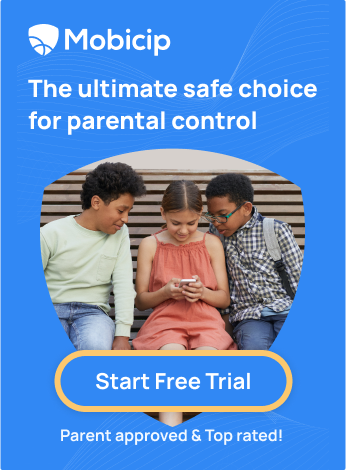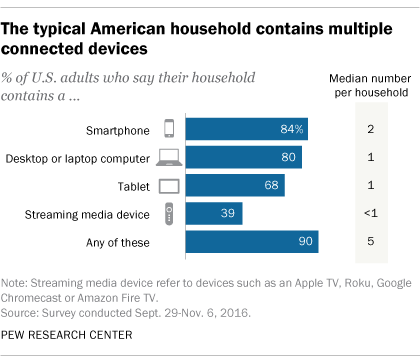5 Reasons Why Apple’s Screen Time Doesn’t Work
It is not by accident that smartphones, tablets and computers have become ubiquitous today. While they serve as valuable productivity tools, the companies that make them, along with those that make apps, have relentlessly focused on making them engaging. A good thing, one might argue. There comes a point when these tools have become so engaging to be considered addictive, especially among younger users.
The behavioral effects of such hyper-engagement with screens and technology is not a new phenomenon (the television was a forerunner), but the level of personalization and one-to-one usage is indeed unprecedented in history. The very companies that made these products face a backlash around what made them successful, and are being asked to create tools to keep the engagment level in check. Apple and Google have indeed taken steps to address this issue, each launching parental control and screen time tools in quick succession.
In September, Apple officially launched iOS 12 with enhanced parental control and screen time features.
While it sounds good in theory, Apple’s offering only serves to tide over the criticism as it doesn’t address the real problem in a holistic manner.
1. Parental Control for the iPhone and iPad, Only!
The typical American family has 5 devices – 2 smartphones, 2 computers, and 1 tablet, according to the Pew Research Center.
That means iOS parental controls can protect only a third or half the number of devices in the family, assuming those are Apple devices. Any parent taking away a screen from a highly engaged child or teenager knows the first reaction is that of finding another screen that serves the purpose. Apple’s iOS 12 Screen Time is a standalone feature that works only on iOS devices and surprisingly not even the Mac. Not to mention the fact that 1 in 5 familes is hyperconnected with 10 or more devices. How does setting up parental controls on just a couple of devices make sense in such families?
2. Doesn’t Work on Shared Devices
iOS 12 parental controls and screen time assume there is only one user per device. Unlike the iPhone, which is typically a single user device, iPads are often shared by family members. Nearly 40% of children 0- to 8- years-old use a shared tablet at home.
Setting up screen time and Internet limits on such a device for one child means constantly over-riding the settings or modifying them through the day when it is shared. Geoffrey Fowler, Technology Columnist for the Washington Post, after reviewing the new iOS 12 parental controls, concludes that it makes parenting more difficult, not less.
“I was surprised how difficult Apple’s parental software was to use. Even discounting for beta-software bugs Apple will hopefully squash, Screen Time is one of Apple’s weakest software launches in years. Apple treats parents like IT administrators for their kids, saddled with a zillion choices to make and knobs to adjust.”
3. Rudimentary Internet Filtering
The Internet Filtering and controls on iOS are very basic, protect only the Safari browser and not Chrome or other apps with built-in browsers, and offer only two choices
- Restrict adult websites, relying on categorization known only to Apple
- Restrict specific websites identified by the parent
This may work well for children 0-2 years old, arguably. Even if you’re a parent with plenty of time on your hands, adding websites manually to allow them one-by-one is nothing short of a nightmare. There are 2 billion websites on the Internet and 200 million active ones.

As the developer of the most comprehensive Internet Filter in existence today, Mobicip knows a thing or two about this problem. Content on the Internet is evolving and proliferating at an alarming rate. Expecting a parent to keep track of and add to the list ridiculous. Apple, by declaring this on its new Families page, in a nod to third-party parental control software like Mobicip, tacitly acknowledges this deficiency:
“You can also install special web browsers that are designed to display kid-friendly content and nothing else.”
4. Parents With Android Smartphones
iOS 12 parental controls require the parent and the child to have iOS devices, connected through Family Sharing. The average American family owns 2.6 Apple products, according to a CNBC poll, and so it must be ok, you would think. After all, a whopping 82% of American teenagers own iPhones, according to the Piper Jaffray Teen Survey. However, Android is still the most widely used smartphone OS in America with 65% marketshare (Kantar WorldPanel).
This means most parents and adults in households have Android smartphones while the next generation has iPhones. Such blended households, more the norm than the exception, have no choice but to go with a reliable and holistic cross-platform parental control app such as Mobicip that allow the parent to use the app on Android to protect an iPhone and vice versa.
5. On-demand Permissions and Interactions
One of the most popular features in Mobicip’s Parental Controls that families engage with is the interaction between the child and parent. When content is blocked, your child can request an override or extension of time. This pops up a request on the parents’ phone, who can then approve it instantly. Mobicip customers often mention real-life examples where this comes in very handy – like when a daughter made a request from Human Anatomy class in high school, the parent was in a work meeting but saw the request, and approved it instantly. This goes to show that the concept of Parental Controls today is evolving from a big brother approach to a collaborative and interactive one, where what is acceptable media or screen time is not fixed but is a moving target that is adjusted over time and age.
While Apple has clearly responded to the demands to do more to curb excessive use by children, the solution offered is centered on furthering its own interests, platforms, and features rather than address the real problem. As we often cite within the Mobicip team as something we would like to avoid, it reflects a typical engineering worldview and solution to a problem. That is why holistic parental control and screentime software such as Mobicip continue to be the only practical and effective options available to parents in reality.
Disclosure: Suren Ramasubbu is a passionate advocate for digital citizenship and the use of technology for learning, the co-founder and CEO of Mobicip, who believes (obviously) that Mobicip offers the most powerful and best-in-class tools for parents to manage technology in the household.








